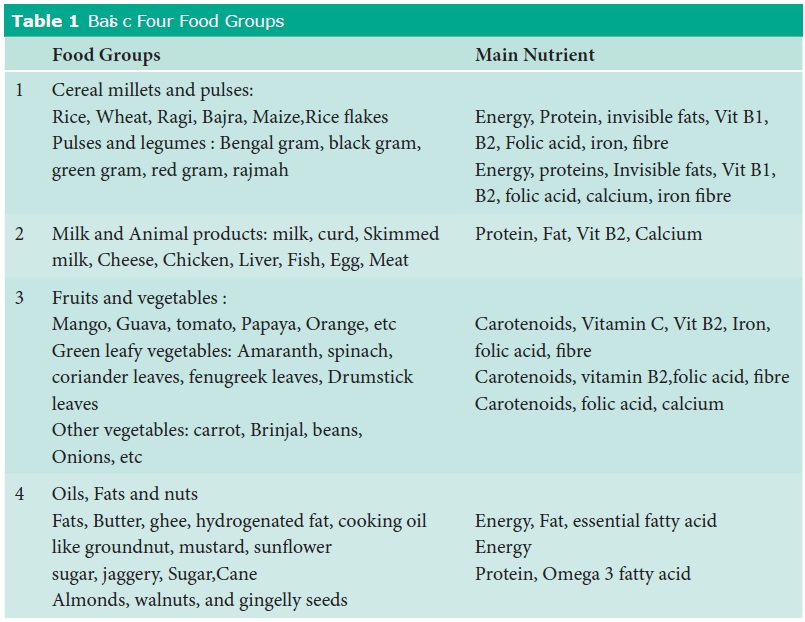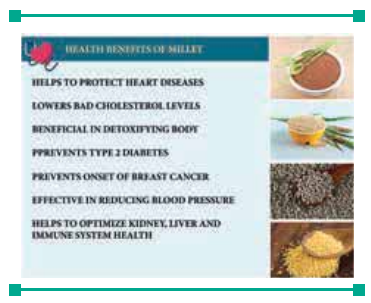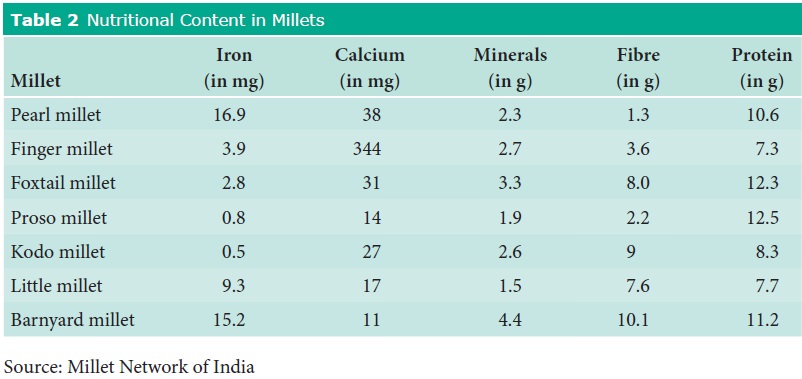Food Science - Basic Four Food Groups and its Significance | 11th Home Science : Chapter 3 : Food Science
Chapter: 11th Home Science : Chapter 3 : Food Science
Basic Four Food Groups and its Significance
BASIC FOUR FOOD GROUPS AND ITS
SIGNIFICANCE
Food groups have been classified accord-ing to
various methods from time to time. ICMR (2011) has classified the different
foods items into four food groups as listed in Table 1. They are
·
Cereal, millets and pulses
·
Milk, and animal products
·
Fruits and vegetables
·
Fats, oils and nuts

Significance of the Four-Food Group System
The four food group system can be used for the following purposes:
i. Planning wholesome balanced menus to
achieve nutritional ade-quacy.
ii. Assessing nutritional status – a brief
diet history of an individual can disclose inadequacies of food and nutrients
from any of the four groups.
Based on the assessment, nutrition educa-tion
can be imparted to the individual.
The quantity of the meals can be improved or
is said to be optimum when the diets are complete. Every meal should have foods
providing energy, protein, vitamins and minerals fibre and adequate amount of
water.

Millets
Millets are small – seeded grasses that are
hard and grow well in dry zones as rain-fed crops under marginal conditions of
soil fertility and moisture. Millets are one of the oldest foods known to
humans and possibly the first cereal grains to be used for domestic purposes.
They are highly nutritious, gluten free. Hence they are soothing and easy to
digest. They are con-sidered to be the least allergic and most digestible
grains available. Compared to rice, polished rice, millets release lesser
percentage of glucose and over a longer period of time this lowers the risk of
diabetes.

Types and Importance of Millets
Millets are particularly high in minerals like
iron, magnesium, phosphorous and potassium, finger millet (ragi) is richest in
calcium content.
Kinds of millets:
1. Barnyard Millet – Kuthiravali
2. Finger Millet – Ragi
3. Foxtail Millet – Thinai
4. Kodo Millet – Varagu
5. Little Millet – Samai
6. Pearl Millet – Kambu
7. Proso Millet – Panivaragu
8. Sorghum – Cholam
· Millets can be incorporated in our daily diet for almost all the meals and dishes. Breakfast items like porridge, dosa, idli, uppuma, puttu,ragi kali,-doughnuts, vadas, bonda, chapathis, pooris etc are some of the commonly prepared items.
·
Main meal items like ragi kali is highly nutritious.
·
Millets can also lend themselves to the baking of cakes and
biscuits as a 20% to 50% level of the cereal flour is being used and therefore
enhance the nutri-tive value of the product. The nutritional content of millets
is given in Table 2.


Related Topics